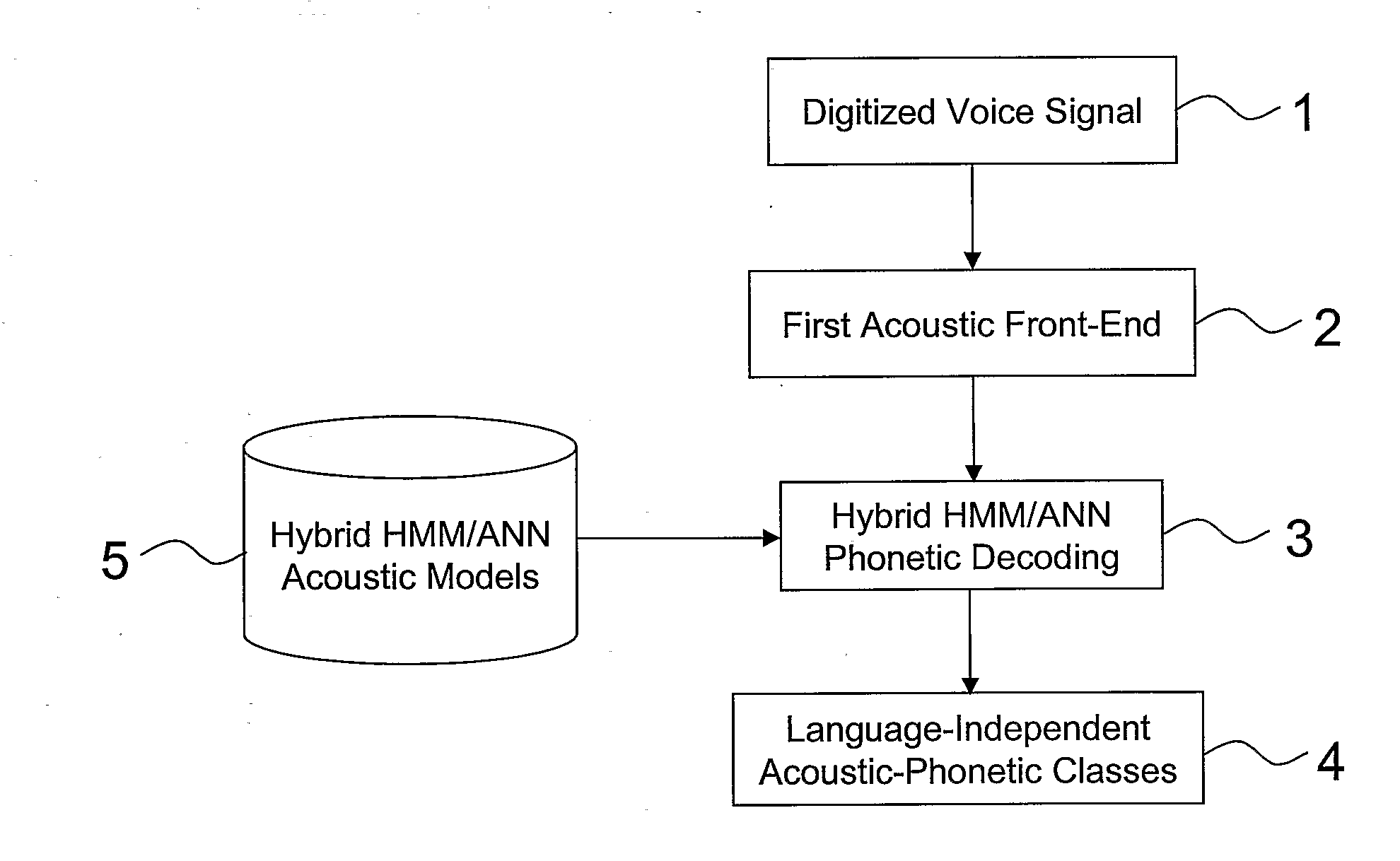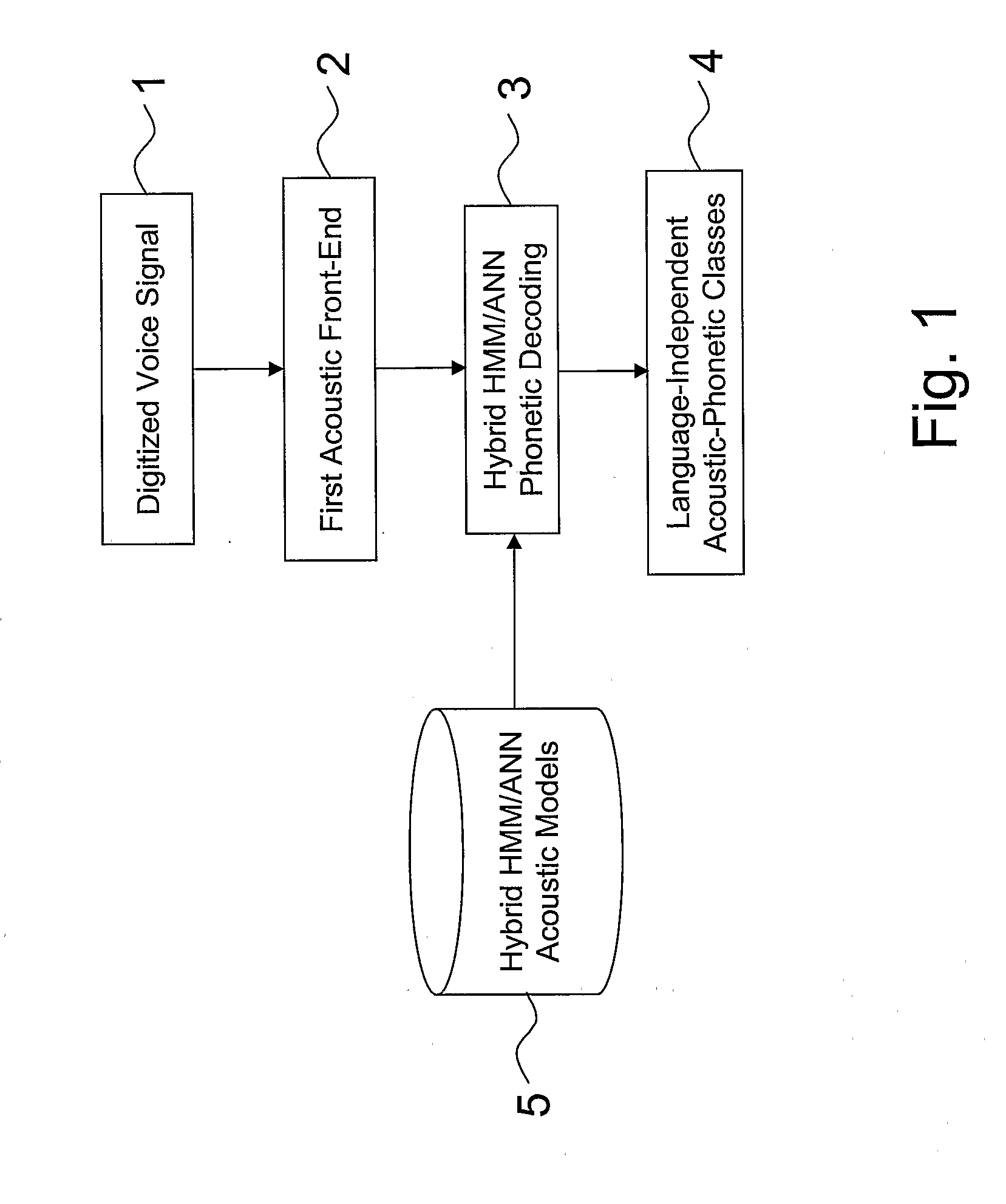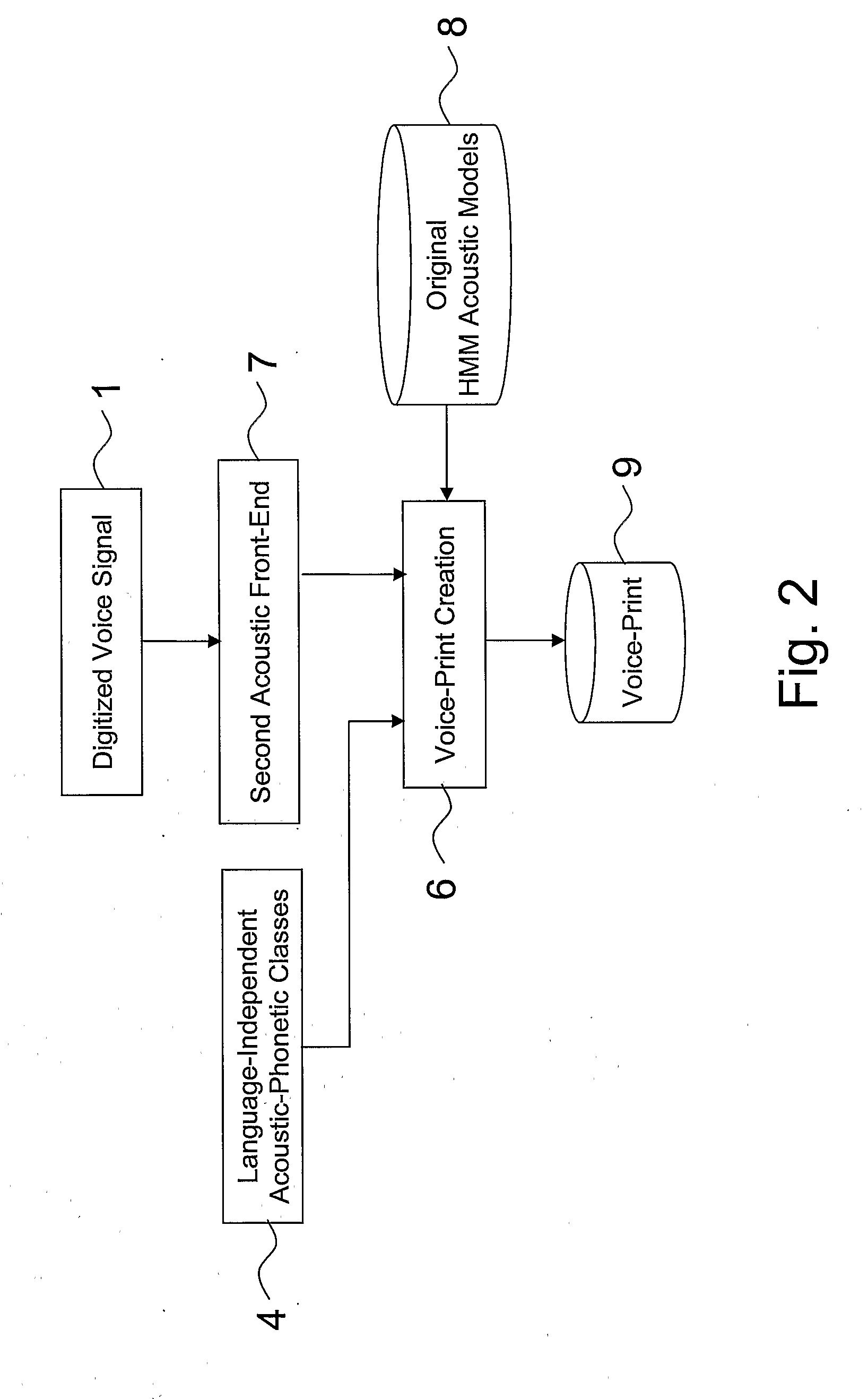Automatic Text-Independent, Language-Independent Speaker Voice-Print Creation and Speaker Recognition
a speaker voice and language technology, applied in the field of automatic text-independent, language-independent speaker voiceprint creation and speaker recognition, can solve the problems of affecting the accuracy of speakers of languages, requiring a system like this, and a high degree of automation, and achieves high decoding quality, efficient and precise decoding, and excessive rough detail.
- Summary
- Abstract
- Description
- Claims
- Application Information
AI Technical Summary
Benefits of technology
Problems solved by technology
Method used
Image
Examples
Embodiment Construction
[0031]The following discussion is presented to enable a person skilled in the art to make and use the invention. Various modifications to the embodiments will be readily apparent to those skilled in the art, and the generic principles herein may be applied to other embodiments and applications without departing from the spirit and scope of the present invention. Thus, the present invention is not intended to be limited to the embodiments shown, but is to be accorded the widest scope consistent with the principles and features disclosed herein and defined in the attached claims.
[0032]In addition, the present invention is implemented by means of a computer program product including software code portions for implementing, when the computer program product is loaded in a memory of the processing system and run on the processing system, a speaker voice-print creation system, as described hereinafter with reference to FIGS. 1-3, a speaker verification system, as described hereinafter wit...
PUM
 Login to View More
Login to View More Abstract
Description
Claims
Application Information
 Login to View More
Login to View More - R&D
- Intellectual Property
- Life Sciences
- Materials
- Tech Scout
- Unparalleled Data Quality
- Higher Quality Content
- 60% Fewer Hallucinations
Browse by: Latest US Patents, China's latest patents, Technical Efficacy Thesaurus, Application Domain, Technology Topic, Popular Technical Reports.
© 2025 PatSnap. All rights reserved.Legal|Privacy policy|Modern Slavery Act Transparency Statement|Sitemap|About US| Contact US: help@patsnap.com



